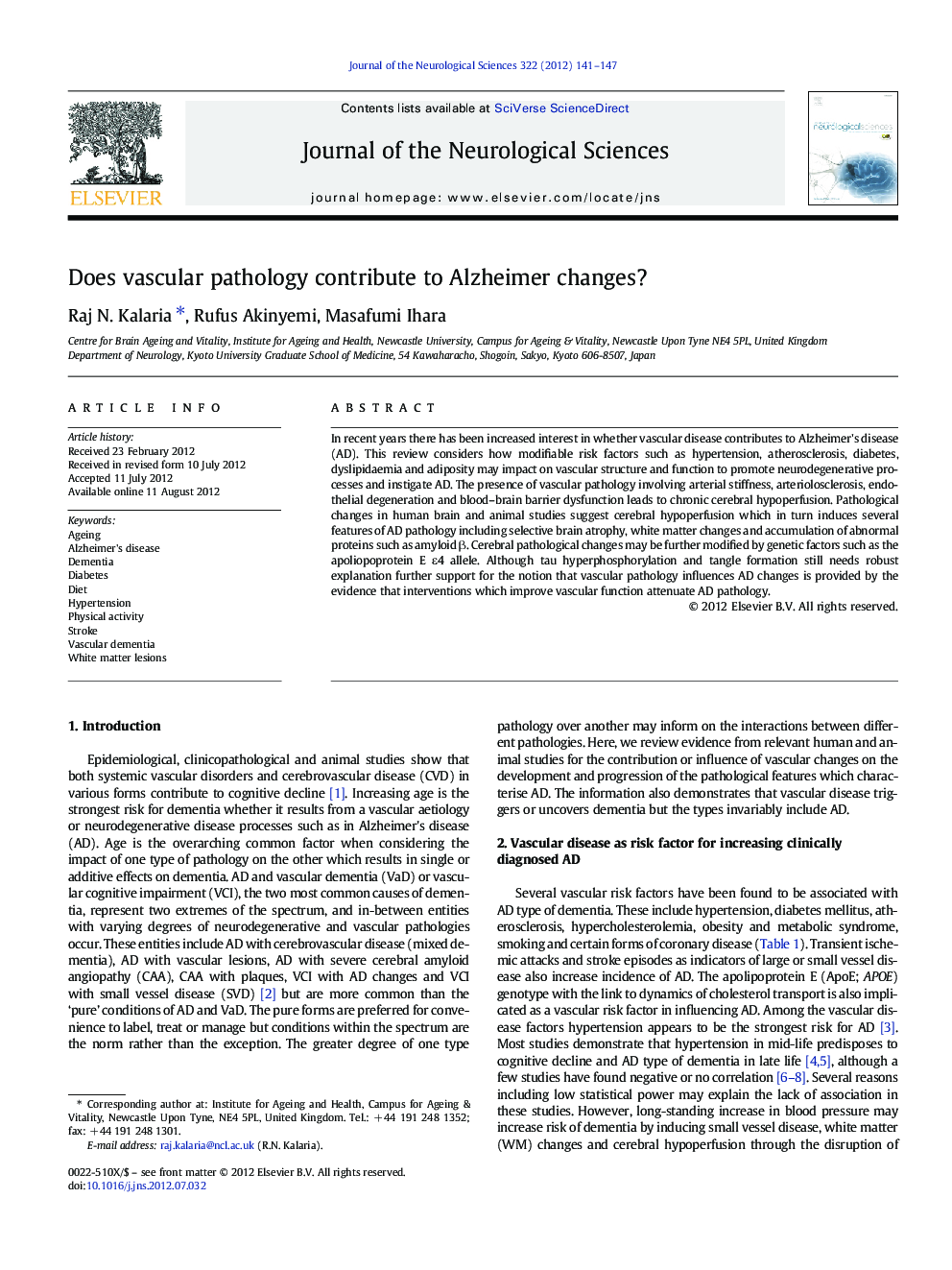| Article ID | Journal | Published Year | Pages | File Type |
|---|---|---|---|---|
| 8280135 | Journal of the Neurological Sciences | 2012 | 7 Pages |
Abstract
In recent years there has been increased interest in whether vascular disease contributes to Alzheimer's disease (AD). This review considers how modifiable risk factors such as hypertension, atherosclerosis, diabetes, dyslipidaemia and adiposity may impact on vascular structure and function to promote neurodegenerative processes and instigate AD. The presence of vascular pathology involving arterial stiffness, arteriolosclerosis, endothelial degeneration and blood-brain barrier dysfunction leads to chronic cerebral hypoperfusion. Pathological changes in human brain and animal studies suggest cerebral hypoperfusion which in turn induces several features of AD pathology including selective brain atrophy, white matter changes and accumulation of abnormal proteins such as amyloid β. Cerebral pathological changes may be further modified by genetic factors such as the apoliopoprotein E ε4 allele. Although tau hyperphosphorylation and tangle formation still needs robust explanation further support for the notion that vascular pathology influences AD changes is provided by the evidence that interventions which improve vascular function attenuate AD pathology.
Keywords
Related Topics
Life Sciences
Biochemistry, Genetics and Molecular Biology
Ageing
Authors
Raj N. Kalaria, Rufus Akinyemi, Masafumi Ihara,
